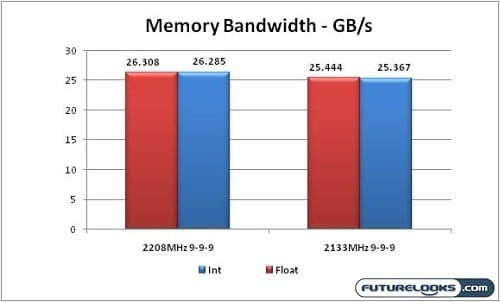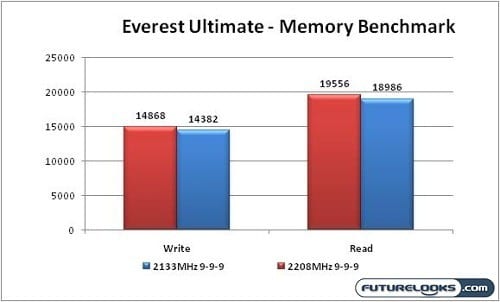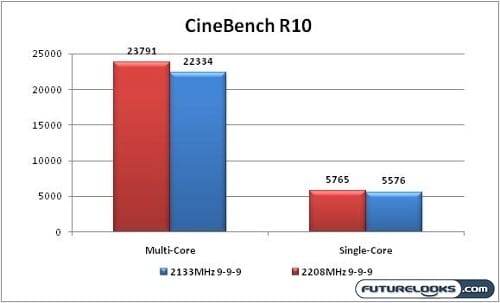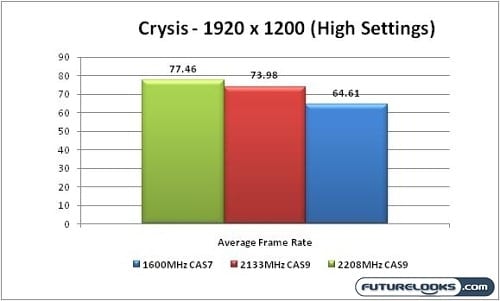Benchmarks Galore
In order to see what the memory is made of we used a whole bunch of benchmarks which included SANDRA, Everest Ultimate, Cinebench and Crysis. We also added the well known SuperPI to our tests.
SuperPI was tossed in the mix just so some extreme readers can see what kind of overclocked performance we got with minimal effort. Since SuperPI is also used in overclocking competitions like the GIGABYTE’s GOOC Events, it makes a lot of sense to include it.
SiSOFT SANDRA

These modules really show off their speed and end up in almost Triple Channel memory performance territory. That’s 26.3 GB/s, or more accuraetely, 26,308 MB/s of memory bandwidth which is very useful to the CPU’s four Hyperthreaded cores.
Everest Ultimate

Everest, almost hits the 20K sweetspot. You might be able to break that if your motherboard is a bit more aggressive than our GIGABYTE UD5 test bench. It would’ve been nice to break it in testing though. Perhaps, I should inquire about the 24-Phase UD6 or Rampage III? Or maybe we’ll just wait till the new P55A series boards roll out.
Cinebench

If the system can fly through Cinebench, it can easily handle any encoding or video converting. Here, you can see it hits the 22K mark. The system at this speed actually surpassing the Core i7 965 and 975EE which hang out around the 20.5K level.
Crysis

The memory doesn’t do a whole lot for games quite as much as the processor when we take it up to its highly overclocked state. Still, you get a nice performance jump using some settings that normally bring other systems to a crawl. If nothing else, the memory operated flawlessly and was very stable throughout 3D testing.
